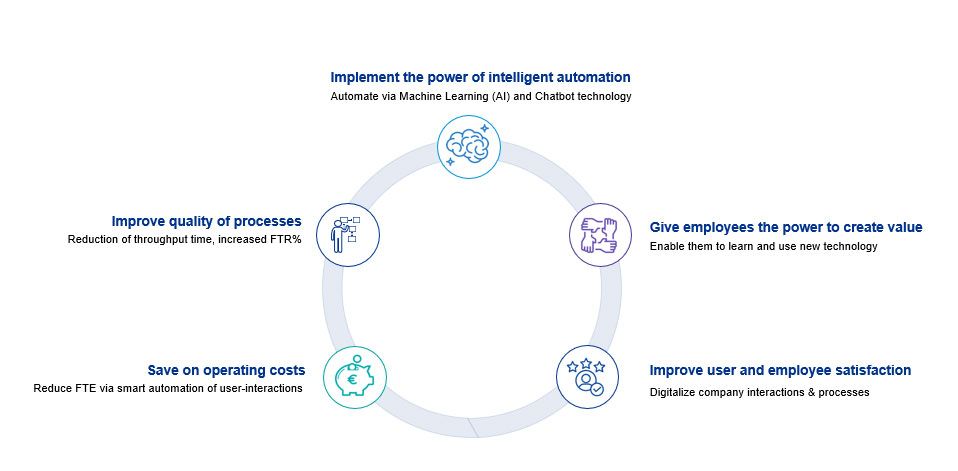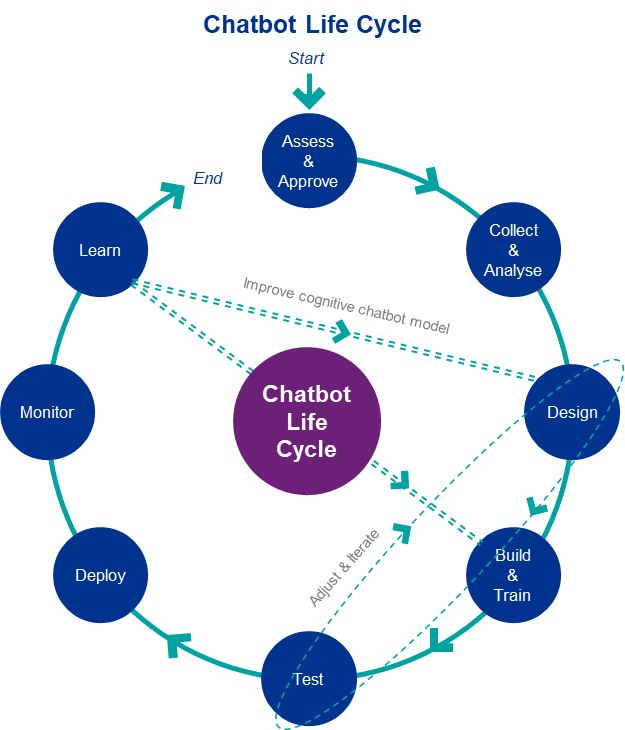A Chatbot, or virtual assistant, is a piece of software designed to engage in conversation with customers or employees. This means that the user can ask a question, to which the Chatbot responds with trained answers, a multiple-choice menu, or a relevant reference. These can be both single-task Chatbots, which for example, can specifically view the status of a ticket, to complex virtual assistants that can help you handle a complete IT problem. Combined with Machine Learning advancements, Chatbots are almost indistinguishable from humans.
How does it work?
The main challenge for Chatbots is understanding the user's intent, also known as the 'intent.'
Modern Chatbots learn to recognize words and phrases in a specific context. They understand people's natural language and can therefore have realistic conversations with the user. This allows a Chatbot to understand the difference between "I want to book for my birthday" and "I want to book a trip now." As long as the questions are relatively simple, the conversation can be held with just the Chatbot. If the conversation becomes more complex, a representative can take over the conversation via Live-chat.
In addition to understanding the questions, most Chatbots are fed with (internal) data to be able to answer the user's question. For example, when asked "How many IT tickets were handled in my company yesterday?" the Chatbot must first be integrated with the IT systems to answer this question. Based on the business processes, an answer structure must be set up that aligns with the company's logic. The Chatbot can also serve as a trigger for other automation solutions, such as RPA & Low Code BPM applications, by invoking actions. Therefore, there are no 'one-size-fits-all' solutions; we specifically look at the customer's needs within the organization.
How does it work?
Within companies, many employees are busy answering questions from customers, managers, executives, regulators, suppliers, or third parties. Answering these (routine) questions often takes a lot of time and resources in your organization. Speed and efficiency are created by automating a portion of these answers through Chatbots. This allows the service representative to focus on more complex customer questions while the Chatbot handles routine questions. Because the answers are answered organically and consistently in the organization, the user experience and customer satisfaction of customers and employees increase.

How KPMG can help
Our approach is based on the Chatbot Life Cycle. The implementation starts with finding the right Chatbot use cases and (if necessary) a vendor selection. Subsequently, a data analysis is made, which serves as the basis for determining the topics and corresponding intents. Then the dialogues are designed, the conversational flow is built, and the Minimum Viable Product (MVP) is tested with end users. If the MVP meets the organization's and the user's requirements, the Chatbot is launched live via the desired channel. In the final phases, the emphasis is on analyzing conversations and improving the Intent model.
To give you an idea of the possibilities of a Chatbot, this page includes use cases and whitepapers. These resources illustrate how Chatbots can be applied within organizations.

Featured
Contacts
Joris Juttmann
Partner
KPMG in the Netherlands
juttmann.joris@kpmg.nl
+31 20 656 7916
Dimitri Sloof
Partner
KPMG in the Netherlands
sloof.dimitri@kpmg.nl
+31 20 656 4456



